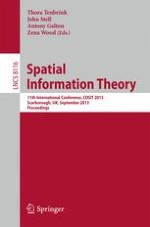2013 | Book
Spatial Information Theory
11th International Conference, COSIT 2013, Scarborough, UK, September 2-6, 2013. Proceedings
Editors: Thora Tenbrink, John Stell, Antony Galton, Zena Wood
Publisher: Springer International Publishing
Book Series : Lecture Notes in Computer Science
